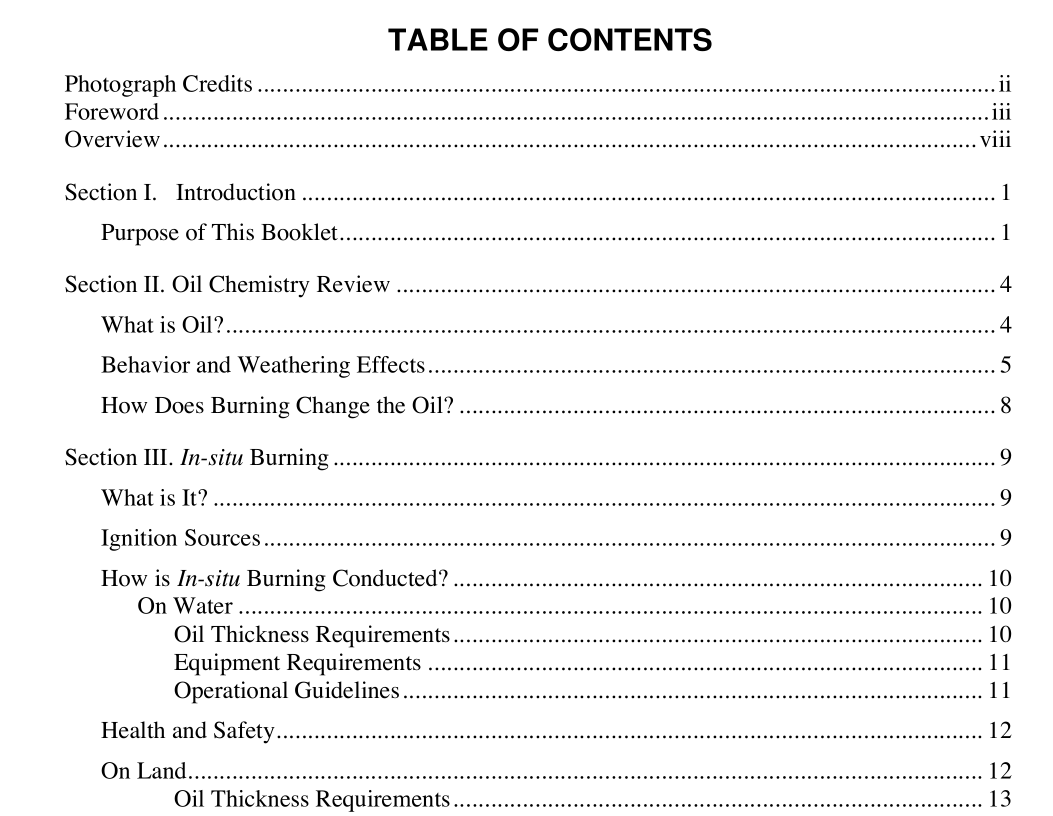API Publication 4740 pdf download

API Publication 4740 pdf download.A Decsion-maker’s Guide to In- situ Burning
During a response to an oil spill, in many cases there are several federal agencies as well as state and local agencies from the affected area that become involved with the response efforts. The Incident Command System (ICS) is a response tool that has been almost universally adopted by state and federal agencies as the method of rapidly organizing a coordinated response to an incident, such as an oil spill. If all agencies involved in the incident are using the same categories to address critical needs to manage their agency, the cooperative effort of all the agencies will increase dramatically. The Unified Command structure is a necessary tool within the ICS for managing multi-jurisdictional responses to oil spills or hazardous substance releases. When planned for and practiced, ICS/UC is viewed as the most effective response management system to address discharges or releases. The ICS/UC is an integrated and flexible structure that emphasizes cooperation and coordination in local, state, and federal responses to complex multi-jurisdictional, multi-agency incidents. Within the ICS/UC, there is a requirement for a single individual, or Incident Commander (IC) to be the final decision-maker for the efforts of the response. The UC is a structure that brings together the ÒIncident CommandersÓ of all major organizations involved (federal, state, local, and Responsible Party groups) in the incident in order to coordinate an effective response while at the same time carrying out their own jurisdictional responsibilities. These ÒIncident CommandersÓ are typically referred to as On-scene Coordinators (OSC)Ñthose individuals who have the pre-designated legal authority to make decisions for their agency during an incident, including the access and disbursement of funds to address their agencyÕs response needs. There may be Federal On- scene Coordinators (FOSCs) from EPA and the U.S. Coast Guard; the affected State(s)Õ On-scene Coordinators (SOSCs); and Local OSCs representing their local jurisdictions.
A fire can be started with a range of ignition sources, from a simple match to more sophisticated equipment (see Figure 4 and 5). The ignition source is used to provide enough heat for a long enough period so that some of the oil vaporizes and the vapors ignite. Heavy oils require longer heating time and a hotter flame to ignite, compared to lighter oils. A key goal during an on-water burn is to ignite as much of the oil surface as possible, so that the oil is heated enough to form vapors and sustain the burn. Specialized ignition sources include the ÒHelitorch,Ó an incendiary device that hangs from a helicopter and drops a burning napalm- like substance (GELLED GASOLINE) onto the area to be burned (Figure 5). The Helitorch requires a highly trained flight crew to operate the equipment effectively. The gelled gasoline is loaded into a 55-gallon tank on the Helitorch. The fuel is pumped through a nozzle and ignited with propane jets. The falling stream of burning fuel separates into individual globules that burn for 4 Ð 6 minutes, igniting the oil or other combustible material. Its success rate is high, and it has ignited crude oil in winds up to 16 knots (30 km/hr). Helitorches are commercially available, being first developed for fire-fighting and forestry management. They are safe because they allow ignition from a distance, thus keeping people removed from the open fire.









